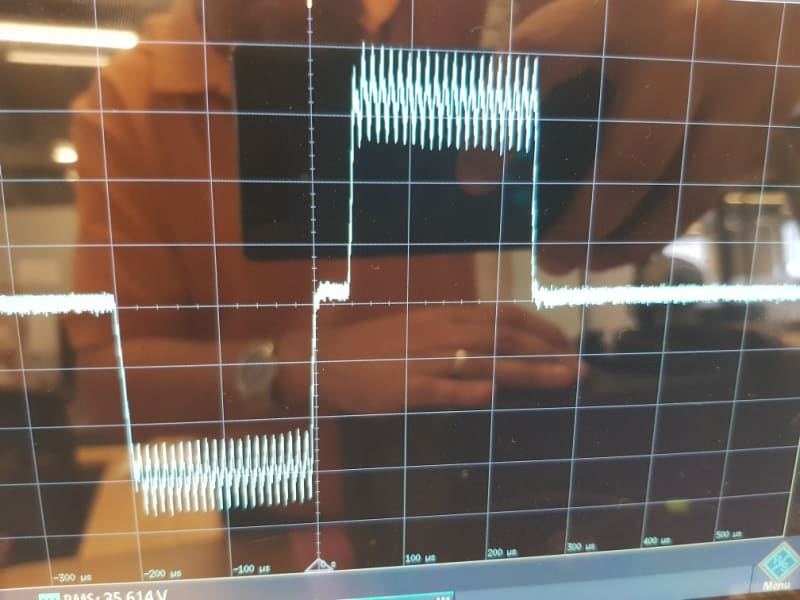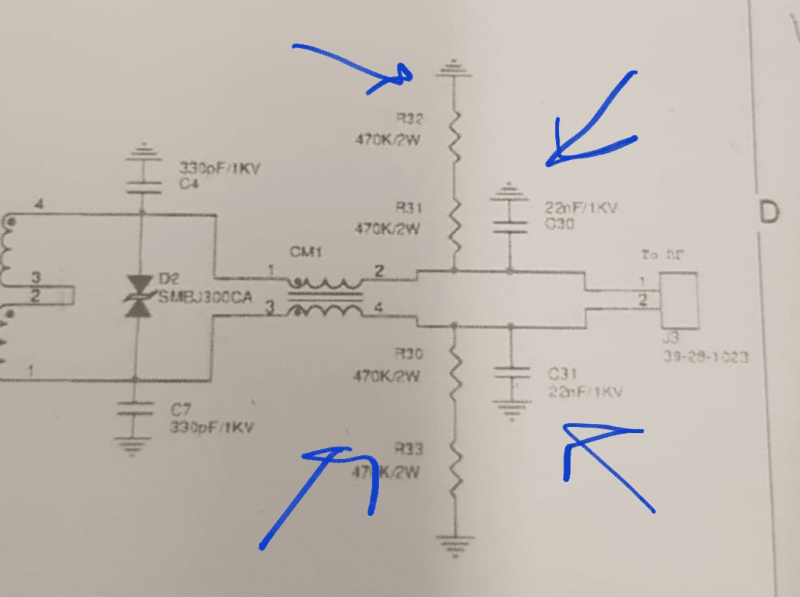Hi all,
I have a tense circuit which outputs a bi phasic square signal at 12.5 hz.
Apperantely it is creating a leakage current on the gnd line through the capcitors/resistors at the outputs which are connected to gnd.when u removed them, to keep the output floating, I receive a signal with ripple voltage on it, which explains why capacitors were used .is there another way to get rid of this ripple without the use if capacitors to gnd? Maybe dome kind of a common mode choke at the output? Any idea would be greatly appreciated.pics attached
Udi
I have a tense circuit which outputs a bi phasic square signal at 12.5 hz.
Apperantely it is creating a leakage current on the gnd line through the capcitors/resistors at the outputs which are connected to gnd.when u removed them, to keep the output floating, I receive a signal with ripple voltage on it, which explains why capacitors were used .is there another way to get rid of this ripple without the use if capacitors to gnd? Maybe dome kind of a common mode choke at the output? Any idea would be greatly appreciated.pics attached
Udi


